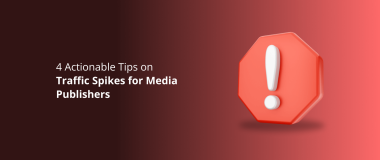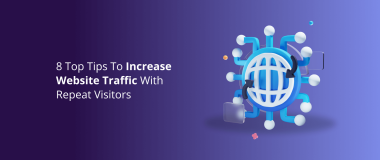What’s not to like about getting free traffic to your website? Naturally, it won’t just happen on its own – you need to do the initial work, and then continue to keep an eye on and maintain your website to ensure traffic keeps coming your way.
Still, organic website traffic is the best type of traffic for a number of reasons, all of which will be talking points in today’s article.
What Is Organic Traffic?
Organic traffic is when a user clicks on an organic search result (website) through a search engine results page. Even though paid ads are always displayed at the top of SERPs, they only get around 3.58% of all clicks, compared to 41.45% of clicks that go to organic results.
Of course, if your page isn’t displayed on the first page of search engine results (Google), the exposure and hits you get are greatly reduced.
What does get you all those clicks, and traffic respectively, is applying good SEO practices and evolving your strategy around matching user search intent, and satisfying the desires of both algorithms and humans. More about that later in the article.
First, let’s establish what you will receive in return for executing well your organic traffic strategy.
Benefits of Organic Traffic

- Little-to-no cost.
- Drives quality leads.
- Develops higher customer trust.
- Improves brand loyalty.
- Higher conversion rates.
- Brings sustainable results.
- Makes you customer-centric.
1. Little-to-No Cost
Sure, you need to purchase a domain, and get adequate hosting for your website, but apart from that, directing organic traffic to your website is free.
Unlike going on the PPC route, where you need to invest, in order to drive traffic to your website, using search engine optimization can be done without extra fees. Sure, one can argue you have to pay for specialized software like Semrush or Ahrefs, or invest in an SEO specialist.
However, it’s not mandatory, you always have the option to teach yourself some SEO techniques, and just use free tools for keyword research, etc.
2. Drives Quality Leads
You might be wondering: why is organic traffic important? There are a lot of reasons, and one of them is that it could lead to quality leads for your business.
You see, relying on an organic approach means you need to invest time into researching your audience and understanding what search terms your prospects are using.
If you manage to execute it perfectly, chances are, a lead will find exactly what they’re looking for on a page of your website, and decide to do business with you.
3. Develops Higher Customer Trust
Organic traffic can give you a competitive advantage over your competitors, as well-optimized content can help you build your website authority. And that can lead to better chances of ranking.
Users, on the other hand, also tend to stick to certain websites that have earned their trust, instead of visiting platforms they’ve just seen for the first time.
4. Improves Brand Loyalty
When it comes to your business, and your website, it’s important to think of it as a brand. People remember brands, and brands are what triggers their emotions, and their consumer behavior.
Never underestimate the power of a brand, if you manage to create a strong one, you’ve practically achieved what you’ve been dreaming about.
5. Higher Conversion Rates
When you compare organic and paid traffic, it’s only logical that the first one gets the higher conversion rates, since an organic page is one that the Google algorithm has “naturally” placed in the top 10 results, as opposed to the paid one, which is there because someone invested money in it.
After all, it’s no coincidence that the majority of people click on organic results, and ignore the paid ones, as users realize it’s a promotional tactic. Plus, often times organic search results provide a solution for the user, instead of just spamming sales propositions.
6. Brings Sustainable Results
A good paid ad can bring a lot of traffic to your website, but only for a limited time – once it expires, you’ll most likely suffer a drop in traffic. On the other side of the spectrum, organic traffic is sustainable and could bring long-term traffic your way.
If you manage to optimize your website, and follow the EAT guidelines, you can theoretically reach unlimited traffic and online visibility. This will not only bring more visitors and potential customers to your site, but will also strengthen your brand and help you become an industry leader.
7. Makes You Customer-Centric
You can’t acquire enough organic traffic, if you’re not placing the customer above everything – it’s simple as that. You’re not just trying to sell your products or services, your entire website is created to revolve around the user.
When you think of it, it’s pretty similar to when you run a physical business – your attitude towards your customers can make the biggest difference in the world.
People can sense when you are treating them like walking bags of money. Of course, profit is crucial no matter the business, however, you will actually be more profitable if you are customer-centric.
Organic Website Traffic: 11 Tips For Success
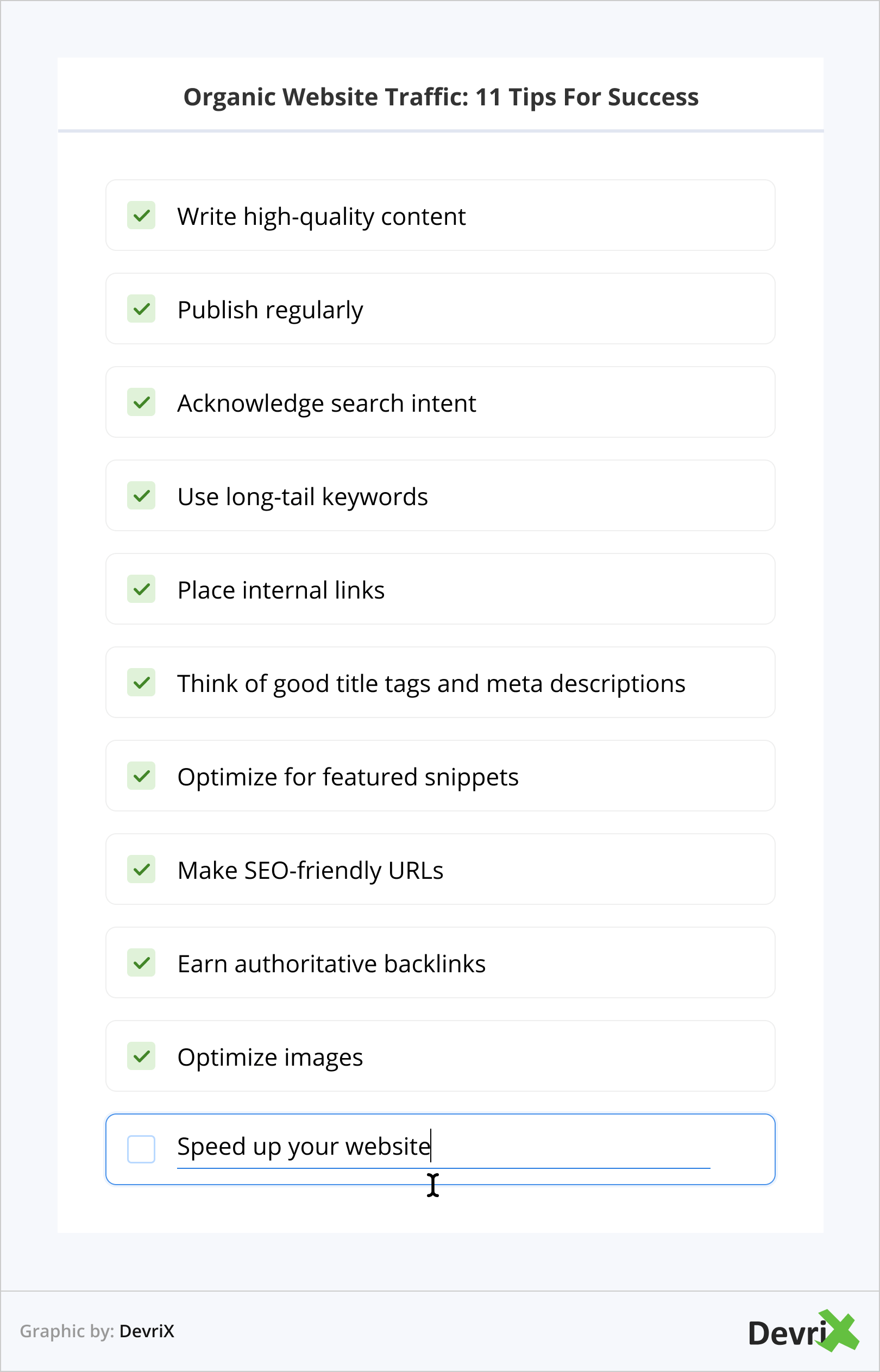
- Write high-quality content.
- Publish regularly.
- Acknowledge search intent.
- Use long-tail keywords.
- Place internal links.
- Think of good title tags and meta descriptions.
- Optimize for featured snippets.
- Make SEO-friendly URLs.
- Earn authoritative backlinks.
- Optimize images.
- Speed up your website.
1. Write High-Quality Content
Content is king! And nothing is more important for your organic traffic and rankings than top-notch content.
Also, make sure to write about topics that you’ve established, after research, to be useful for your target audience. Let’s say your website is about digital marketing, and you offer services in that niche.
It’s a good idea to write about SEO tips, social media strategy, email marketing, PPC, and so on. Good writing is what can earn you a loyal audience that can lead to new clients.

Readers Also Enjoy: Common Mistakes Content Writers Make [How to Write Better] – DevriX
2. Publish Regularly
Don’t get lazy with your writing, hire professional content writers, if you must, and try to publish new articles regularly, following the best SEO practices.
There is no magic formula on how many articles you should publish on a weekly basis, but generally try to avoid not publishing anything new in weeks or months.
It’s nice to have someplace where you have everything planned out – it could be in an Excel sheet – so you can remind yourself when and what to publish.
3. Acknowledge Search Intent
User search intent is a big deal. Managing to successfully satisfy intent is something that can not only drive more traffic to your site, but also bring the right type of people to it.
Imagine a person finds exactly what they’ve been looking for in an article you’ve posted. There’s a high chance that that person will find other interesting topics on your website, and start visiting it regularly. They may even become a regular customer.
4. Use Long-Tail Keywords
Regarding the choice of keywords to focus on, a mistake beginners might make is to go for the keywords with huge volumes. Those, however, come with a big keyword difficulty, too, and are very hard to rank for, especially when you are a new website with little-to-no authority.
For example, you’re looking for a good keyword about “social media marketing”. The term itself has a global search volume of almost 230K, however, the keyword difficulty is 100%, according to Semrush.
Additionally, when you take a look at the SERP for that keyword, you can see that the top 10 positions are taken by industry-leading, authoritative websites like Investopedia, Sproutsocial, Buffer, Hubspot, Neil Patel, etc.
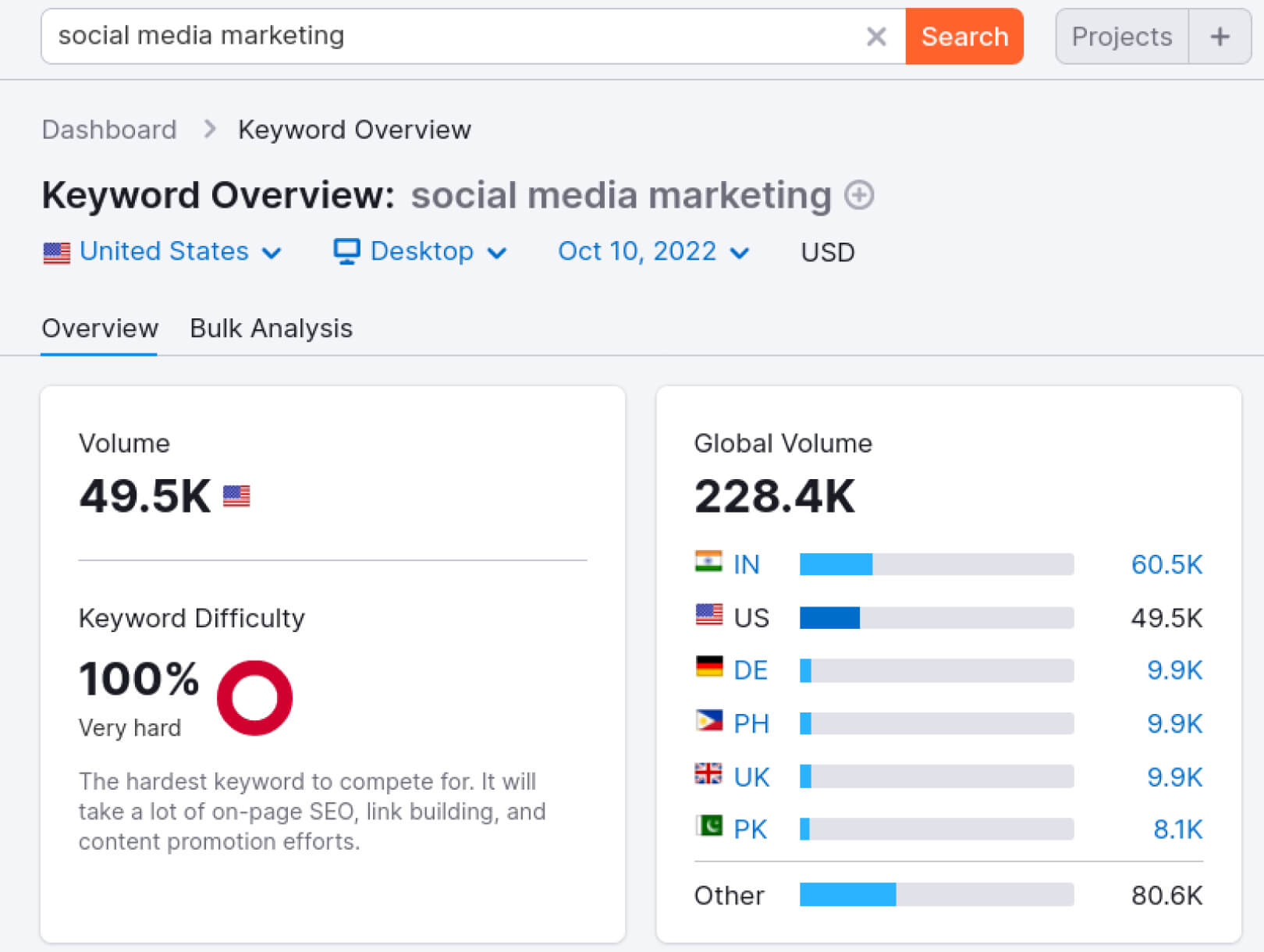
Instead of picking such a keyword, and trying to rank for it (spoiler alert: there’s a 99% chance you won’t), go for a long-tail keyword that a.) has a more specific meaning, and b.) is far less competitive, and you will now have a higher chance of ranking.
In this case, as an example, you can use a keyword like “social media marketing ideas for small business”. True, it has a much lower global search volume of 290, but it targets a specific audience – small business owners.
What’s more, your chances of ranking in the top 10 search results, are extremely higher, provided that your article is well-written and optimized.
5. Place Internal Links
Internal links are indispensable to the high rankings of your website, and your search engine optimization. Internal linking is beneficial in multiple ways, some of which are:

- Better UX. In your article, you’ve mentioned a term or phrase that you can’t go on to explain in detail. Still, you have another article that is on that topic, so the most natural thing is to place a link towards it, and allow readers to click and read more about it.
- Lower bounce rate. A user usually leaves your site when they can’t find the information they are looking for on your pages. Thus, when you place the right links, users can remain on your website, and find what they want, without having to go somewhere else.
- Higher rankings. Google crawl bots use the same technique to index your web pages – allowing them to visit one page from another, and so on is ideal. On the contrary, a page without any links, called an orphan page, is bad for traffic, rankings, and UX.
- Boost older posts. You can’t escape time (or if you can, please tell us how?!), and eventually, your blog posts will get old, and most probably will bring in less traffic. A strategically pointed internal link, however, can rejuvenate those older posts, and keep the traffic flowing.
6. Think of Good Title Tags and Meta Descriptions
Compelling titles and meta descriptions can make the difference between a click on your website link, and just an impression. In the terminology of click-through rates, an impression is when someone sees your website in a SERP, but doesn’t click on your link, and doesn’t bring you any traffic or anything else, respectively.
Let’s think about it: how does one typically choose which result from the top 10 to click on?
According to statistics, 43% of people click on a search result, based solely on the meta description. In other words, it’s a good practice to include your focus keyword/s in the meta description and title tag. Also, make it interesting as possible as to ignite the interest of readers.
And just so you know, click-bait titles and descriptions are not a viable option. People have learned to recognize them, and tend to stray away from them, plus it makes you look like a boring tabloid.
7. Optimize for Featured Snippets
Since we’re on the topic of clicks, featured snippets, a.k.a. position 0 results, get the most. They are displayed at the top of SERPs, meaning they are the first thing a user sees, and their aim is to provide direct answers/information about a query. This has led to the zero-click search phenomenon.
Obtaining a featured snippet will help you increase your organic website traffic, but it’s not that easy to rank for one. You need to follow some established practices, and match certain criteria.
It’s all worth it, in the end, though – when you start seeing your website displayed on featured snippets, you will feel like:

8. Make SEO-friendly URLs
The main goal of URLs is to make navigation easier for users, and allow them to clearly see what page they are on. Hence, you should keep it short and concise – it’s not the place to insert random words that will only confuse visitors.
Here’s a comparison:
https://devrix.com/tutorial/can-ai-write-better-than-humans/
vs.
https://devrix.com/tutorial/can-ai-write-better-than-humans-or-not-this-is-the-human-point-of-view-read-more-to-find-out
Which do you think sounds better?
The point is that URLs can be compared to road signs – only the most essential and valuable information needs to be on them. What’s more, a URL that looks like this: http://www.website.com/online.store/products/7357113/show.html is of no use, as it doesn’t indicate the page you’re on, nor does it add any value.
9. Earn Authoritative Backlinks
External links, or backlinks, and essentially link building, are an indispensable part of your SEO endeavors, and can have a great impact on the authority, expertise, and trustworthiness of your brand.
The question is: how do you earn quality backlinks from high-authority domains?
Of course, there are multiple strategies you can use, so you should decide which ones could be most effective for your business. There’s guest posting, HARO, email outreach, and so on.
Alternatively, you can simply choose to write awesome content and let others organically cite your website, without any type of outreach. If your article ranks in the top 10 of search results, it’s much more likely to acquire backlinks, so proper search optimization does matter, as well.
10. Optimize Images
Another solution on how to increase website traffic organically is through image optimization. Yes, Google also ranks images, and you can obtain traffic by applying the best practices when it comes to optimizing your images.
On top of that, having images and nice visuals on your website also increases user engagement, average session duration, and positive user experience.
11. Speed Up Your Website
Speed matters. Regardless of your SEO efforts or unique content, a slow-loading website is what can ruin the entire experience.
Luckily, there are a lot of ways you can speed up your website, especially with WordPress. Take any measures you can before it becomes an issue, and you start losing traffic and potential customers, because of your slow website.
Also, be aware that your website will naturally start to experience performance issues once it scales, and traffic becomes heavier.
Summary
Organic website traffic is the sweetest type of traffic you can get, since it all revolves around you and your ability to optimize, publish awesome content, and satisfy your audience.
No one says it’s going to be easy, however, it will be sustainable, and very beneficial, with quality leads, high customer engagement, and brand loyalty.
Your destiny is in your hands – believe, educate yourself, create an actionable strategy, put emphasis on user experience – you can do it!
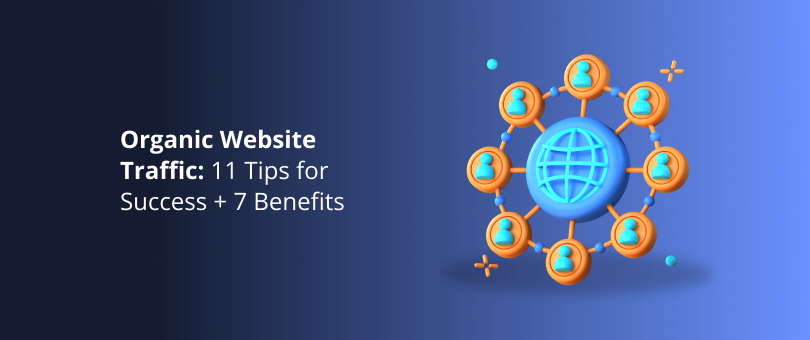
![11 Tips to Increase eCommerce Traffic [And Boost Revenue]](https://devrix.com/wp-content/uploads/2022/11/11-Tips-to-Increase-eCommerce-Traffic-And-Boost-Revenue-380x160.png)
